J Damas
Upgrading short read animal genome assemblies to chromosome level using comparative genomics and a universal probe set
Damas, J; O'Connor, R; Farré, M; Lenis, V P E; Martell, H J; Mandawala, A; Fowler, K E; Joseph, S; Swain, M T; Griffin, D K; Larkin, D M
Authors
R O'Connor
M Farré
V P E Lenis
H J Martell
A Mandawala
K E Fowler
S Joseph
M T Swain
D K Griffin
D M Larkin
Abstract
Most recent initiatives to sequence and assemble new species’ genomes de novo fail to achieve the ultimate endpoint to produce contigs, each representing one whole chromosome. Even the best-assembled genomes (using contemporary technologies) consist of subchromosomal-sized scaffolds. To circumvent this problem, we developed a novel approach that combines computational algorithms to merge scaffolds into chromosomal fragments, PCR-based scaffold verification, and physical mapping to chromosomes. Multigenome-alignment-guided probe selection led to the development of a set of universal avian BAC clones that permit rapid anchoring of multiple scaffolds to chromosomes on all avian genomes. As proof of principle, we assembled genomes of the pigeon (Columbia livia) and peregrine falcon (Falco peregrinus) to chromosome levels comparable, in continuity, to avian reference genomes. Both species are of interest for breeding, cultural, food, and/or environmental reasons. Pigeon has a typical avian karyotype (2n = 80), while falcon (2n = 50) is highly rearranged compared to the avian ancestor. By using chromosome breakpoint data, we established that avian interchromosomal breakpoints appear in the regions of low density of conserved noncoding elements (CNEs) and that the chromosomal fission sites are further limited to long CNE “deserts.” This corresponds with fission being the rarest type of rearrangement in avian genome evolution. High-throughput multiple hybridization and rapid capture strategies using the current BAC set provide the basis for assembling numerous avian (and possibly other reptilian) species, while the overall strategy for scaffold assembly and mapping provides the basis for an approach that (provided metaphases can be generated) could be applied to any animal genome.
Citation
Damas, J., O'Connor, R., Farré, M., Lenis, V. P. E., Martell, H. J., Mandawala, A., Fowler, K. E., Joseph, S., Swain, M. T., Griffin, D. K., & Larkin, D. M. (2017). Upgrading short read animal genome assemblies to chromosome level using comparative genomics and a universal probe set. Genome Research, 27, 697-708. https://doi.org/10.1101/gr.213660.116
| Journal Article Type | Article |
|---|---|
| Acceptance Date | Nov 16, 2016 |
| Publication Date | May 1, 2017 |
| Deposit Date | Dec 7, 2016 |
| Publicly Available Date | Dec 7, 2016 |
| Journal | Genome Research |
| Print ISSN | 1088-9051 |
| Electronic ISSN | 1549-5469 |
| Publisher | Cold Spring Harbor Laboratory Press |
| Peer Reviewed | Peer Reviewed |
| Volume | 27 |
| Pages | 697-708 |
| DOI | https://doi.org/10.1101/gr.213660.116 |
| Public URL | https://rvc-repository.worktribe.com/output/1392100 |
Files
10626.pdf
(781 Kb)
PDF
10626.pdf
(2.3 Mb)
PDF
You might also like
Dinosaurs: Comparative Cytogenomics of Their Reptile Cousins and Avian Descendants
(2022)
Journal Article
Comparative Chromosome Mapping of Musk Ox and the X Chromosome among Some Bovidae Species
(2019)
Journal Article
Downloadable Citations
About RVC Repository
Administrator e-mail: publicationsrepos@rvc.ac.uk
This application uses the following open-source libraries:
SheetJS Community Edition
Apache License Version 2.0 (http://www.apache.org/licenses/)
PDF.js
Apache License Version 2.0 (http://www.apache.org/licenses/)
Font Awesome
SIL OFL 1.1 (http://scripts.sil.org/OFL)
MIT License (http://opensource.org/licenses/mit-license.html)
CC BY 3.0 ( http://creativecommons.org/licenses/by/3.0/)
Powered by Worktribe © 2025
Advanced Search
